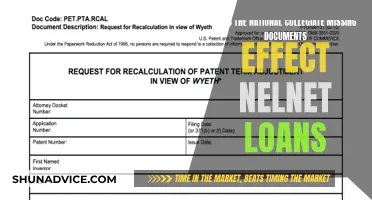
A carry-back loan, also known as seller financing or owner financing, is a type of loan where the seller of a property acts as the lender for the buyer. This type of financing is used when the buyer lacks sufficient credit or a deposit for the entire mortgage loan. The buyer and seller agree on the purchase price of the property, and the buyer provides a down payment directly to the seller. The seller finances the remaining purchase price, and the buyer makes regular payments to the seller according to the agreed-upon schedule until the loan is fully repaid. This type of financing carries risks for both parties involved, and it is recommended that they consult with legal and financial professionals before entering into a carry-back loan agreement.
| Characteristics | Values |
|---|---|
| Type of Loan | The seller of a property provides financing to the buyer |
| Buyer's Benefit | More flexible qualification criteria, potentially lower closing costs, faster sale |
| Seller's Benefit | Attract more potential buyers, possibly sell property faster, steady income with interest from the buyer, potentially higher sale price |
| Interest Rate | 8-15% |
| Risk | High risk for the seller if the buyer defaults |
| Loan Agreement | A legal document, often a promissory note, is drawn up to record the terms of the loan |
What You'll Learn
- Carry back loans, also known as seller financing, are when the seller acts as the lender
- Buyers might opt for a carry back loan if they don't qualify for a traditional mortgage
- Sellers can attract more buyers and sell their property faster
- Carry back loans carry a higher interest rate than conventional loans
- There are risks for both parties, especially the seller, who may face challenges if the buyer defaults

Carry back loans, also known as seller financing, are when the seller acts as the lender
Carry-back loans, also known as seller financing, are an alternative financing option for buyers and sellers in real estate transactions. In this arrangement, the seller of a property agrees to lend money to the buyer, essentially acting as the lender. This can be an attractive option for both parties in certain scenarios, offering flexibility and benefits that traditional mortgage loans may not provide.
In a carry-back loan, the seller extends a portion of the purchase price as a loan to the buyer, which the buyer then agrees to repay over a specified period of time. The loan terms, including the interest rate, repayment schedule, and any associated fees or penalties, are negotiated between the buyer and seller and outlined in a legal contract. This type of financing can be particularly advantageous when buyers struggle to secure traditional financing due to stringent bank lending criteria.
One of the key benefits of carry-back loans is that they can facilitate a faster and more streamlined transaction. The involvement of traditional lenders and their often lengthy underwriting processes is eliminated. This can be especially useful in competitive real estate markets, where speed and simplicity can make a significant difference in securing a desired property. Additionally, carry-back loans offer both parties more flexibility in structuring the deal.
For example, the seller may be willing to accept a lower down payment from the buyer, understanding that the buyer may have limited cash reserves. In turn, the buyer benefits from a more accessible financing option, and the seller may attract a wider pool of potential buyers. Carry-back loans also provide the seller with a steady stream of income through the repayment of the loan, which is typically secured by the property being sold. This can be an appealing source of ongoing cash flow, especially if the seller is not immediately reliant on the full proceeds from the sale.
It is important to note that carry-back loans also come with certain risks and considerations. Sellers become lenders and must be prepared to manage the repayment process, including the potential for late or missed payments. Proper legal documentation and, if necessary, foreclosure procedures should be in place to protect the seller's interests. Buyers, on the other hand, need to ensure they can comfortably manage the repayment terms, just as they would with any other loan.
In summary, carry-back loans, or seller financing, offer a unique financing solution in the real estate market. They provide both buyers and sellers with flexibility, speed, and the potential for mutually beneficial terms. However, it is crucial for both parties to carefully consider the financial implications, legal requirements, and potential risks associated with this type of arrangement. Understanding these factors can help ensure a successful and satisfactory transaction for all involved.
China's Debt: America's Multi-Million Dollar Question
You may want to see also

Buyers might opt for a carry back loan if they don't qualify for a traditional mortgage
A carry-back loan, also known as carry-back financing, is a type of arrangement where the seller of a home acts as the lender, providing the buyer with financing in addition to their mortgage. This type of financing is often used when the buyer lacks sufficient credit or a large enough deposit for a traditional mortgage.
For example, if a buyer wants a $100,000 home and can only provide a $10,000 down payment, they may only be approved for an $80,000 loan from a traditional lender. In this case, the seller can cover the $10,000 gap through carry-back financing. The buyer then pays the seller back over time, often with interest, in addition to their regular mortgage payments.
Carry-back financing can be beneficial for buyers who don't qualify for a traditional mortgage due to issues with income, credit history, or other factors. It provides an alternative financing option, allowing them to purchase a home without having to rely solely on traditional lenders. This method can also speed up the home-buying process, as it does not involve dealing with a traditional bank, and can increase the pool of potential buyers for the seller.
However, there are risks involved for both parties. Buyers who opt for carry-back financing due to credit issues may struggle to keep up with payments, which could result in foreclosure. Sellers also face risks, as they are typically the last to be repaid in the event of a foreclosure. Therefore, it is crucial for sellers to conduct thorough research on the buyer's financial history and create a formal agreement specifying interest rates, loan amounts, and terms. Consulting with a real estate attorney is highly recommended to protect both parties and ensure a successful arrangement.
Sallie Mae Loan App: Hard Inquiry or Not?
You may want to see also

Sellers can attract more buyers and sell their property faster
A carry-back loan, also known as seller financing or owner financing, is a type of loan where the seller of a property provides financing to the buyer. This arrangement can be beneficial when the buyer may not qualify for a traditional mortgage from a bank or financial institution. In this scenario, the seller acts as the lender, allowing the buyer to make payments directly to them over a specified period, under agreed-upon terms.
Carry-back financing can also lead to a faster sale, as the process is generally quicker than a traditional mortgage arrangement. The down payment amount and terms are negotiable between the buyer and seller, providing flexibility. Additionally, the seller benefits from steady payments with interest, as carry-back financing typically carries a higher interest rate than a conventional loan.
However, it is important to note that there are risks involved in carry-back loans, especially for the seller. The seller may face challenges if the buyer defaults on the loan, and they are generally the last to be paid in the event of foreclosure. Therefore, it is crucial for both parties to carefully consider the terms and consult with legal and financial professionals before entering into a carry-back loan agreement.
Missing Documents: Nelnet Loans and National Collegiate's Impact
You may want to see also

Carry back loans carry a higher interest rate than conventional loans
Carry-back loans, also known as carry-back financing, are loans where the seller of a property acts as the lender, carrying a second mortgage on the property that the buyer is responsible for paying off. This type of financing is often sought by buyers with credit history issues who may not qualify for traditional loans.
Carry-back loans typically carry a higher interest rate than conventional loans, usually ranging from 8% to 15%. This is because they are assumed to be offered when traditional lenders are unwilling to provide the necessary financing. The higher interest rate compensates for the increased risk taken on by the seller.
The specific interest rate within this range depends on various factors, including the buyer's credit history and the amount of the first mortgage obtained from a traditional lender. The higher the risk associated with the buyer's credit history, the higher the interest rate the seller may demand.
Additionally, the structure of a carry-back loan can vary based on negotiations between the buyer and seller. The down payment amount, interest rate, monthly payments, loan amount, and repayment terms are all subject to agreement between the two parties.
While carry-back loans offer advantages such as faster sales and steady income with interest for the seller, it is crucial to carefully consider the risks involved. These include the risk of default by the buyer, which can lead to foreclosure, and the potential for the seller to incur losses if the buyer stops making payments. Proper legal structuring of the contract and consultation with real estate attorneys are essential to mitigate these risks.
VFW Loan Crutches: What You Need to Know
You may want to see also

There are risks for both parties, especially the seller, who may face challenges if the buyer defaults
Carry back loans, also known as seller financing or owner financing, are a type of loan where the seller of a property acts as a lender for a buyer on the seller's property. The buyer makes regular payments to the seller according to the agreed-upon schedule until the loan is fully repaid. The interest rate on a carry-back loan can range between 8 and 15%, which is typically higher than a market-based interest rate.
While carry back loans can offer advantages to both buyers and sellers, there are risks for both parties, especially the seller, who may face challenges if the buyer defaults. The buyer is also at risk, as the seller could default on their mortgage on the home. If payments are owed on the property and the seller defaults, the seller could lose the property and the buyer would lose the sum of the amount they invested in the property up until that date.
The greatest concern in a seller carry-back loan is a default by the buyer. If the buyer defaults on the loan, the seller is forced to foreclose on the security if the buyer does not voluntarily cure the default. The seller will have no recourse against the new buyer for the carry-back loan fulfilment and will lose what is owed under the loan. The risk to the seller is exacerbated if they are not in a first secured position on the carryback. In this case, the seller will have to keep current on all defaulted senior secured loans or face the possibility of being wiped out in a foreclosure proceeding.
To mitigate these risks, it is essential for both parties to carefully consider the terms and consult with legal and financial professionals before entering into a carry-back loan agreement. A formal contract should be drafted by a real estate attorney to protect both parties and determine how much the buyer is expected to pay, the interest rate, and the period of time, among other things.
Harmony Loans: Understanding the Basics of This Financial Option
You may want to see also
Frequently asked questions
A carry-back loan, also known as seller financing or owner financing, is a type of loan where the seller of a property provides financing to the buyer. This is usually done when the buyer may not qualify for a traditional mortgage from a bank or financial institution.
A carry-back loan can offer advantages to both buyers and sellers. Buyers might benefit from more flexible qualification criteria and potentially lower closing costs. Sellers can attract more potential buyers and possibly sell their property faster.
There are inherent risks involved in a carry-back loan, especially for the seller, who might face challenges if the buyer defaults on the loan. The seller could also lose out in the event of foreclosure. The buyer also risks losing the sum of the amount they invested in the property if the seller defaults on their mortgage.
Both parties should carefully consider the terms and consult with legal and financial professionals before entering into a carry-back loan agreement. The buyer's credit history and ability to uphold the terms of the agreement are important considerations. The seller should also be aware of their own financial situation and the potential for long-term commitment.







